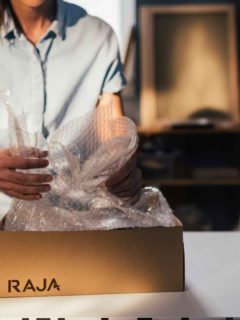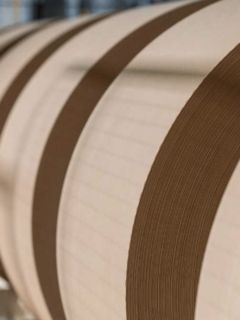The role of adhesive tape could be underestimated, and yet it contributes a lot to the security of parcels. Between losses, packages that open and thefts, adhesive tape allows on the one hand to close a box well and on the other hand to mark it with an inviolable trace dissuading any attempt.But how to choose, place and keep this precious ally of your shipments? Follow the guide of good practices.
What are the criteria for choosing an adhesive tape?
polypropylene hot-melt hand tape, solvent polypropylene hand tape, gummed kraft paper tape… Do you understand anything? It’s not always easy to find your way around the range of products on offer. However, remember that the choice of tape depends mainly on the weight and material of the parcel:

- Polypropylene adhesive tape with acrylic glue for medium to heavy loads: it is resistant to temperature variations and UV rays, and compatible with a wide variety of surfaces (recycled cardboard, etc.);
- Polypropylene adhesive tape with solvent adhesive: this is the most common adhesive tape and its adhesive is more resistant to temperature variations and humidity;
- Polypropylene tape with water-based hot-melt adhesive for heavy loads, which is resistant to abrasion and splitting;
- PVC adhesive tape with solvent-based gl ue can only be used at room temperature and for packages up to 30 kg.
you can also opt for a customised adhesive, which makes the closure of your packages unique and deters anyone from opening it during the shipping
process
The right way to close a package with adhesive tape
Manual closing
with a manual tape dispenser, the task is simplified. Tapes need a lot of pressure to adhere to the surface, otherwise they can come off at any time or form bad folds, so don’t hesitate to put pressure on them when applying
Mechanical sealing
if a machine is used, it is important to check that it applies the correct pressure via its pressure rollers and to maintain them regularly
The different ways of closing a package :
- L-seal for light products, which involves placing tape on each end of the box where the flaps meet and extending over the side.
- The U-seal for heavy products or light weight cartons with a long transport time, where tape is placed along the entire length (where the flaps meet) on the top and bottom of the carton, overlapping to the adjacent side.
- The combined L- and U-seal is used for transporting heavy products over a long period of time by crossing the tape along the length and width of the ends of the box;
- H-seal: the most secure closure, where tape is placed along the length of the box (at the flaps) at the top and bottom, and across the width and all four ends of the box. Reinforced tape can also be added across the middle of the box.

Taking care of your tape
adhesive tape needs special care: it should be stored away from moisture and at room temperature. It is best to leave it in its original packaging, also away from light. Store it upright so that the end of the adhesive is stuck to the underside of the roll. If you have boxes of several rolls, keep the siliconised paper that protects them from each other to prevent them from sticking together. Adhesive tape can be kept for an average of one year. After that, the adhesive may crumble. Remember to check the production date on the batch number.
A good tip: your stock of adhesive tape should be measured accurately. You should have enough to avoid running out and still manage to use them before their “expiry” date.
Tamper-proof closures
theft of goods is a real problem in shipping systems. However, there are now several devices that can provide proof that the package has not been opened during transport. These are known as “tamper-evident” closures
- The gummed tape makes it very difficult and visible to tear off;
- High security tapeleave a tamper-evident message;
- Reinforced strapping makes it very difficult to access, but requires more time away from the machine, and is not suitable for transport by the Post Office, as the parcel could get caught on the conveyor belt and tear the box;
- For certain product categories,the opaque security pouchfor some product categories, a void fraud adhesive is used in the event of a breach.
closing your parcel with adhesive tape is therefore more complex than it seems. But by following these tips you have every chance of adopting good practice and producing parcels that are both secure and protected!The three key points to remember
- Choose your tape according to the weight, materials and shipping method of your parcel: the ranges on the market offer tapes with different kinds of glue adapted to the climatic elements for example.
- Manual or mechanical sealing: remember that a certain amount of pressure must be exerted for the glue to stick to the cardboard. Automatic dispensers are ideal for this purpose
- Use personalised or security-enhanced tapes to prevent theft and tampering with your packages during shipping.















